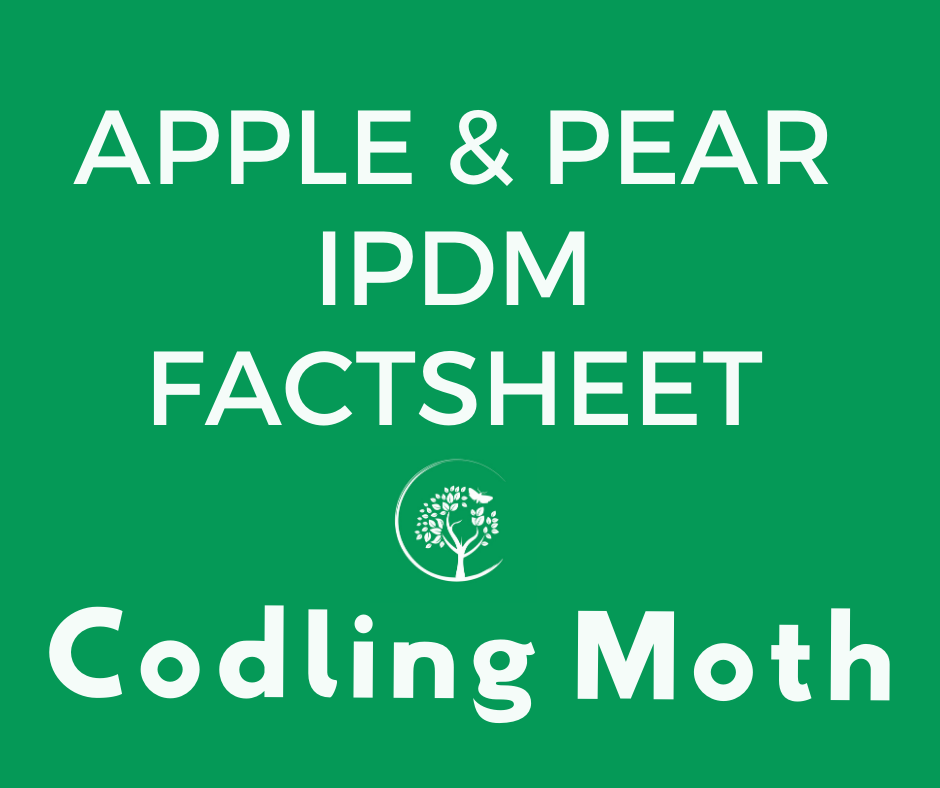To download the below information in a printable pdf format click on IPDM Factsheet – Codling Moth
IPDM Quick Facts
- Orchard hygiene is a critical component of codling moth control
- Destruction of infested fruit, removal and burning neglected trees, cleaning empty fruit bins before storage, and not leaving unpicked fruit on trees after harvest will reduce the number of codling moth infesting the orchard.
- Burn piles of pulled trees before spring. Leaving them later means that any overwintering larvae under the bark will emerge and easily find mates, then mated females will move to nearby blocks of trees to lay eggs.
- Although codling moth numbers can be monitored using pheromone traps and the results can be used to optimise spray timing it is important to check for damage on a regular basis.
- Mating disruption can be an effective tool against codling moths. Mating disruption works best when used against low populations in large blocks of similar trees or where complementary tactics (such as trapping of females, egg parasitisation, applications of virus against newly hatched larvae, nematodes and/or parasitoid wasps against cocooned larvae and pupae) are used.
- Normal pheromone lures will not give accurate indication of moth populations in mating disruption treated blocks. High dose pheromone lures incorporating kairomones such as pear ester should be used in disruption treated blocks.
- Hanging traps high in the tree gives better results.
- A group of 3-5 traps, about 10m apart in a row, may give a more reliable indication of moth activity in a block than single, sparsely placed traps.
- Codling moth in most districts has two cohorts within each generation. Emergence of the first cohort in spring is erratic and results from individual blocks are required to set biofix dates, rather than using district forecasts.
- Emergence of the second cohort in spring is predictable using degree-days accumulated from the date when daylength reaches 13.5-14 hrs.
- Selection of pesticides for use against insect pests and fungal diseases needs consideration of the non-target effects of those pesticides so that the impact on biological control agents is minimised to prevent resurgence of minor/ secondary pests (see chapter 6).
- The age of larvae infesting fruit can be determined by measuring the width of the head capsule to identify the larval instar and then using the degree-day table to work backwards to when the larvae would have hatched. That allows you to identify possible problems with spray application or poor timing.
- The introduced parasitoid wasp Mastrus ridens has been released against codling moth in QLD, NSW, VIC, TAS, and SA.

